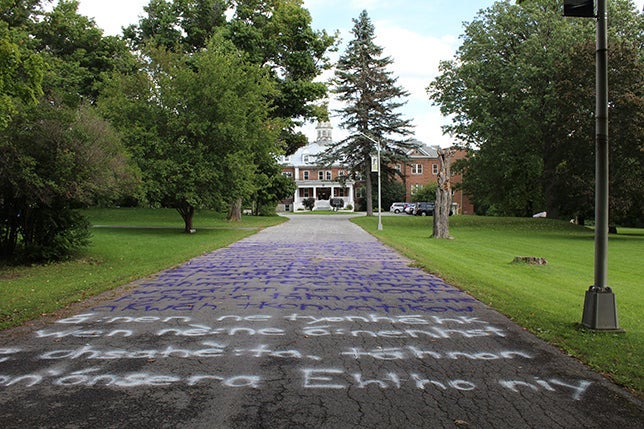Mush Hole Project at former Mohawk Institute Residential School foregrounds Indigenous experiences of site.
Southern Ontario’s first residential school has a long stretch of pavement leading from the road to its front doors. It’s a powerful sight for Sherlene Bomberry, who attended the Mohawk Institute Residential School in Brantford, Ontario, from 1966 until it closed in 1970. These days she volunteers as a tour guide at the site, now the Woodland Cultural Centre. “The hardest part for me, going back, was walking up the laneway,” she said.

As part of the event, organizers prepared a site tour led by residential school survivors during which participants would hear about the survivors’ experiences and encounter 20 installations by 35 artists. Andrew Houston, a founding Mush Hole Project collaborator and a drama professor at the University of Waterloo, noted that each installation and performance animated a certain dimension of the venue – an aspect of its history or cultural significance, for example. “Site-specific work is really about using the site as a resource,” he said. “[Y]ou’re finding all kinds of ways … to represent it, to bring it to life.”
Naomi Johnson, a Mohawk artist from Six Nations and the Woodland Cultural Centre’s artistic director, used the laneway as the backdrop for her piece. The title is OHEN:TON KARIHWATEHKWEN 2016 (“Thanksgiving Address” in Mohawk), though she is not fluent in the language. “For me, not having my language is a direct impact of the residential school system,” she said.
Organizers also used the Mush Hole Project to draw attention and support to the Woodland Centre’s $1-million Save the Evidence fundraising campaign for building and artefact maintenance. As a follow-up, project collaborator Sorouja Moll, a U of Waterloo lecturer, is organizing the Integrating Knowledges Summit on Truth and Reconciliation with the Waterloo Aboriginal Education Centre at St. Paul’s University. The conference will take place from Oct. 14 to 16.